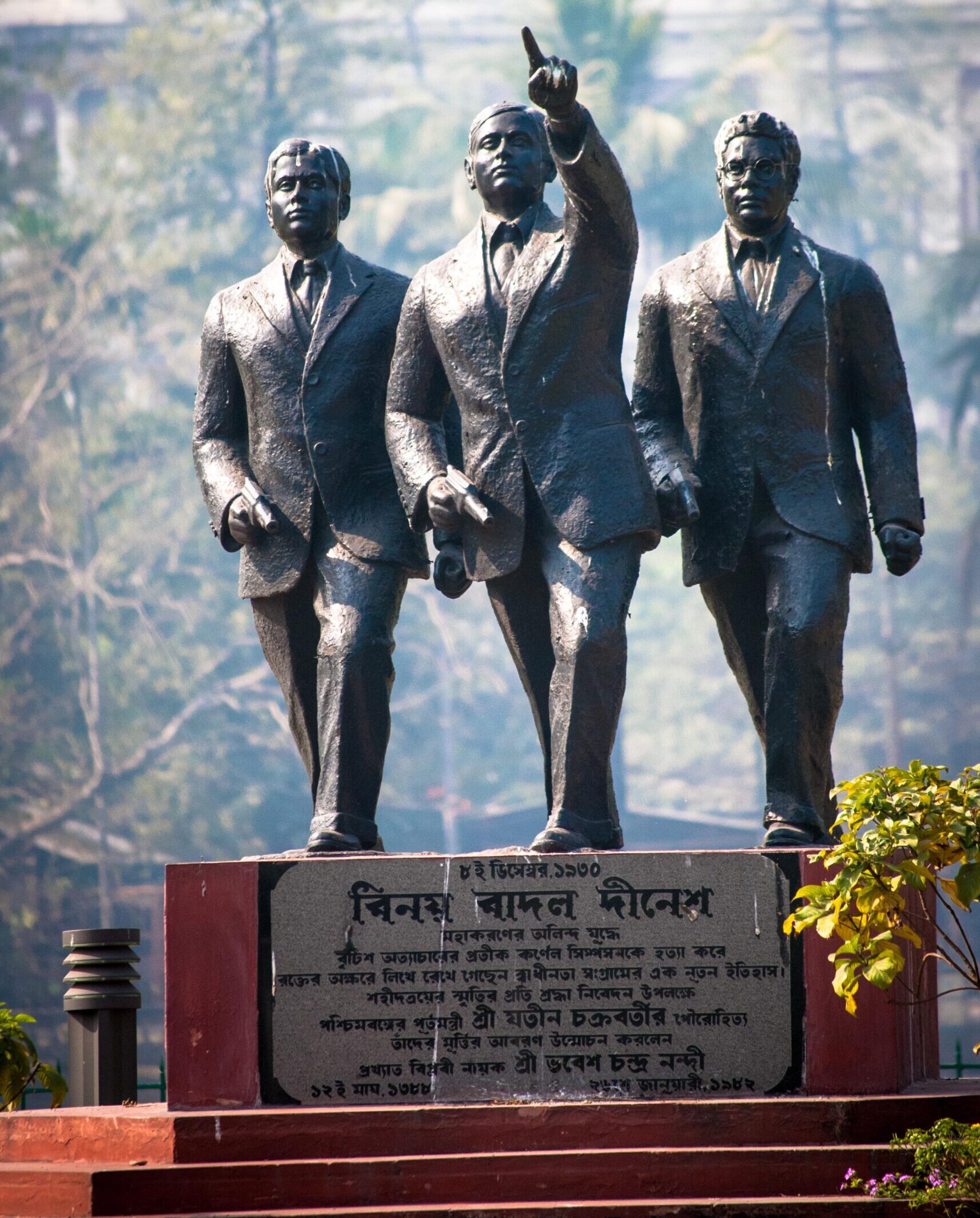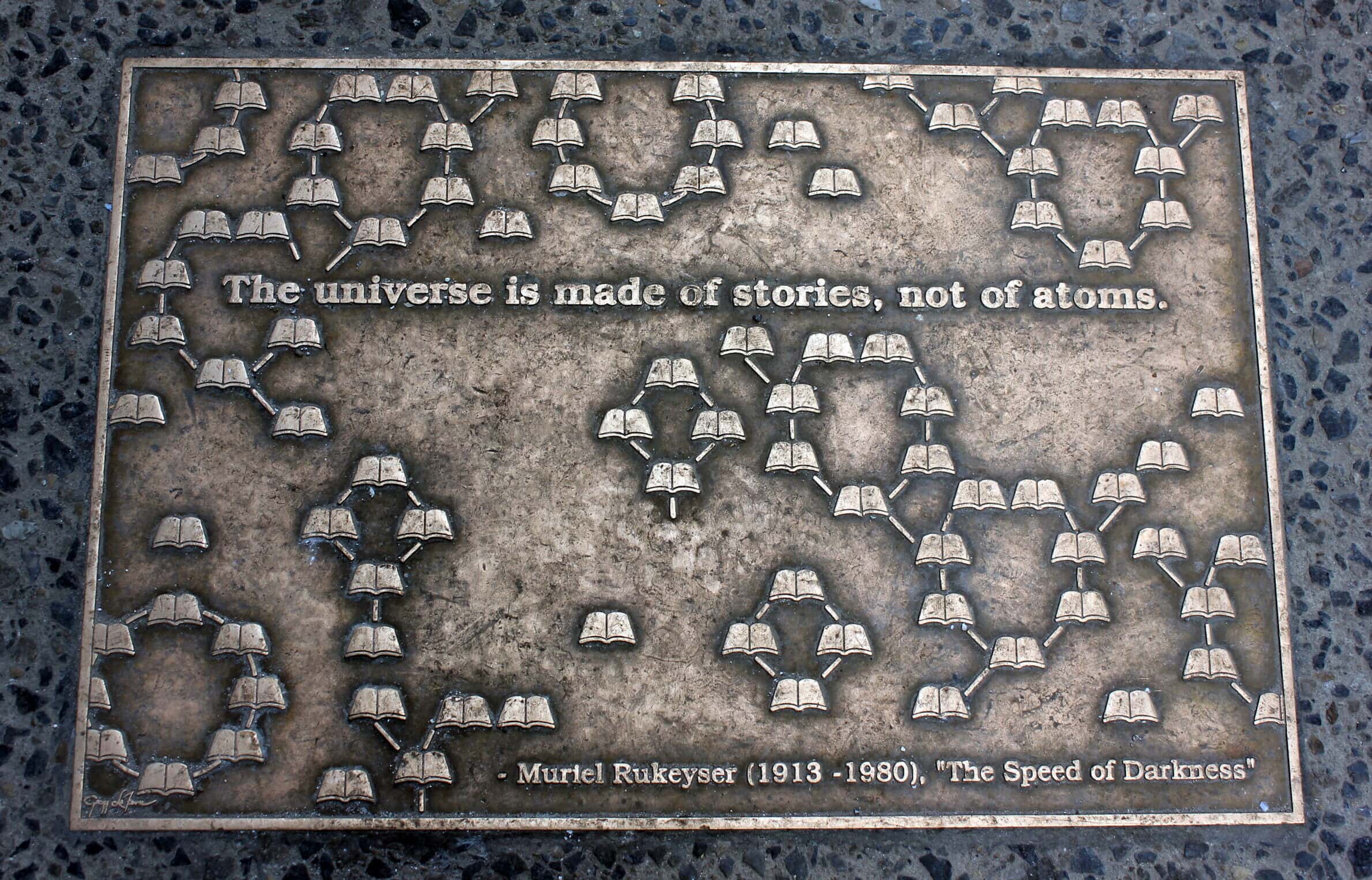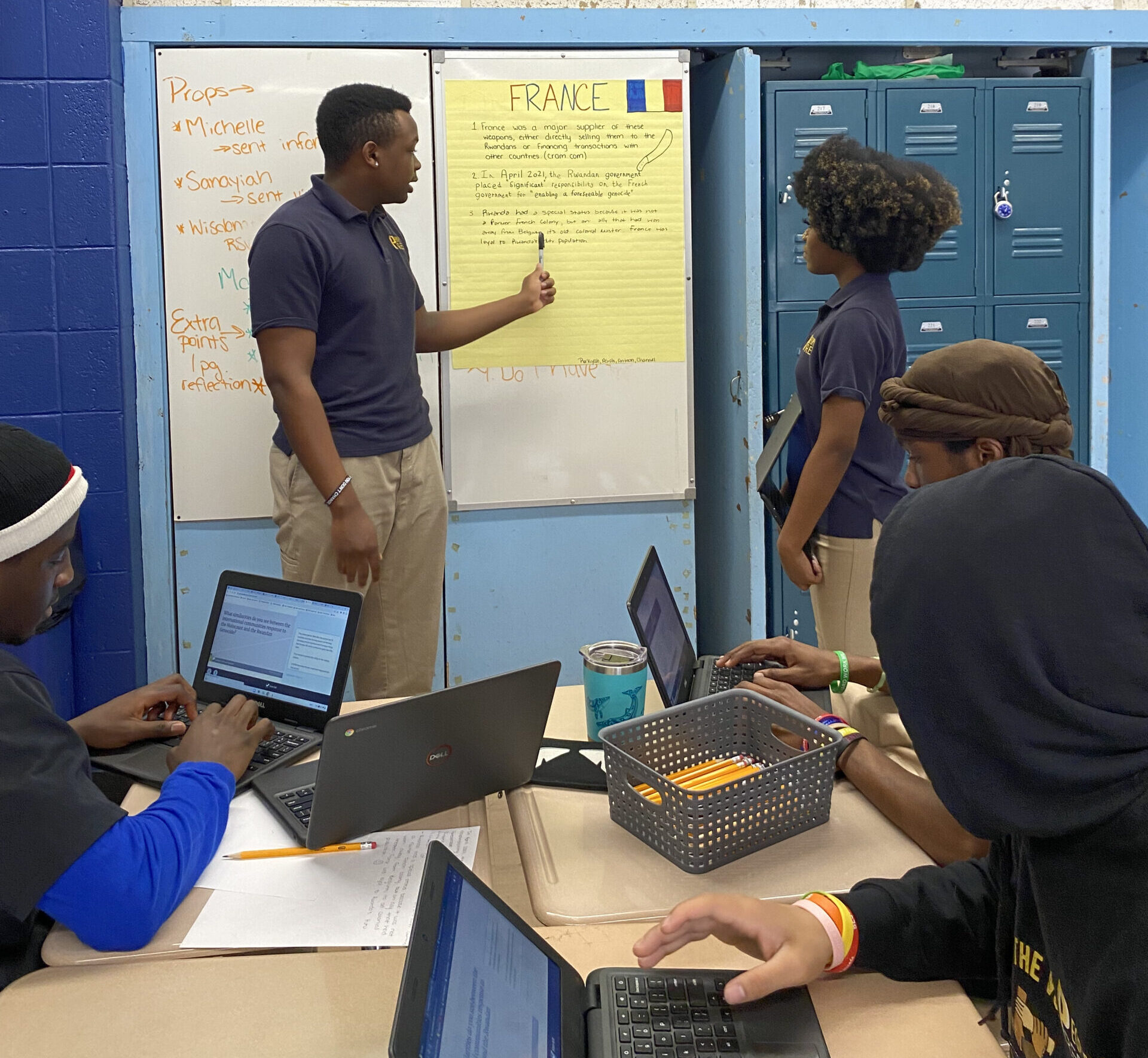The contentious public debates over the interpretation of history that have made headlines during the past few years recently inspired me to reflect on my own experience with some of the issues that have been raised in these debates. I am a traditionally trained historian with a Ph.D. from the University of New Mexico, but I have spent more than 20 years working in museums and historical organizations. In 1974 I registered for a course innocuously named Museum Work. This course, offered at the graduate level by the University of New Mexico, was taught at the Museum of New Mexico in Santa Fe on Saturday mornings. My introduction to museums through this course was among the most frustrating of my graduate school experiences.
Each student in the class was assigned a collection from the holdings of the history division of the museum. We were told to describe the collection and to decipher its meaning. My collection had belonged to one family, and it contained household items, heavy on elaborate furniture. The task seemed simple enough: go to Zimmerman Library at the University of New Mexico and check out all the books on antiques I could find, especially those on furniture styles. I was meticulous in my research. I carefully identified the furniture by style—most was Eastlake—and I dated the pieces and described the process of manufacture. The entire exercise seemed incredibly simple and no challenge at all. Full of a sense of superiority, I handed in my analysis, expecting on the next Saturday to have the paper back in my hands, with comments of praise in the margins recognizing the facility with which I had mastered this novel but rather silly kind of historical inquiry. To my chagrin, the instructor’s comments did not contain praise but instead took me to task for having missed the entire point. The instructor made the absurd assertion that my collection consisted of historical documents that, properly analyzed, could answer questions about the people who had owned them and the society in which they had lived. This kind of analysis, I thought at the time, was the hard way to do it. I was skeptical of the notion that my collection had any value as historical documentation, and even if the objects had some slight historical value, they were certainly far inferior to written documents, a lot less accessible—and seemingly less respectable. I had not yet realized that a traditional history doctorate was insufficient preparation for my assignment.
Despite my ingrained skepticism, my first job after graduation in 1975 was a contract with the Albuquerque Museum to develop and install an exhibit on the history of sheep and cattle ranching in New Mexico. The job was a three-month scramble in which I scoured the state for collections, visited with dozens of longtime ranchers over many cups of coffee, reread the literature, learned about how ranching and the western land shaped the lives and values of people, looked at thousands of photographs, and investigated the Hispanic origins of the traditions of ranching. I began to understand how people created material culture and were in turn shaped by the artifacts they created and used. I also learned that exhibits require teamwork and the participation of multiple “stakeholders,” or interested parties. I came to depend upon colleagues who did not have my traditional historical training but who were critical to the success of the project. This kind of history was vastly different from what I had learned in graduate school, and its practitioners came from diverse backgrounds. None of this squared with my notion of the history profession—a notion, ingrained in graduate school, that asserted the absolute primacy of written evidence, the Ph.D. as evidence of competency, classroom teaching as the appropriate forum for dissemination, an individualistic approach to historical inquiry, and publication of scholarly articles and monographs.
During the summer that I worked on the exhibition, I visited the history department at the university on a few occasions. I was a little confused about history and my role in it. But if I sought any reassurance for the legitimacy of the work I was doing, the history department was not the place to seek it. On one occasion, I visited with a professor whose seminar I had taken a few years earlier. He politely asked what I was doing. I described my work at the museum enthusiastically but perhaps with an unnecessary note of apology. When I finished, he looked at me with sympathy, pointing out that perhaps at some future time I might get a real job in history. I left feeling that, at least as far as the department was concerned, I had failed because I was not teaching; I was even a mild embarrassment. That was simply the way it was then, in most history departments.
In the fall of 1975 I became a permanent employee of the Albuquerque Museum and began to involve myself in the affairs of my new profession. I attended state and regional museum meetings and seminars offered by the American Association for State and Local History. My enthusiasm for the possibilities of my new work grew, but my hubris over my newly won doctorate dissipated as I realized that it did not carry the same meaning in this world as it did in academia. I soon learned a doctorate could occasionally be a hindrance. I remember several painful instances in which presenters at regional meetings chastised academically trained historians for their general ignorance of material culture and frequent disdain for the exhibit medium.
What is the role of academic history in organizations that interpret the past for public audiences? When I first entered the museum field, public history organizations were viewed as translators of sorts. They took research results produced by academic historians and translated them into forms that large, disparate audiences could comprehend. I now know that this is not an adequate or accurate differentiation between the work of academic historians and the work of interpreting the past in public history organizations. These organizations do not simply translate the results of historical research, and they are not simply alternative, albeit secondary, venues for the work of historians.
My professor was correct; the history presented in museums is not real history, if by real history we mean academic history. I really should have realized this fact on that first Saturday morning at the Museum of New Mexico. Our content is different, our process is different, our definitions of significance are different, and our audiences are enormous and disparate. Dissemination occurs in multiple formats and, in my experience, controversy is nearly a constant. Public debate, often with political overtones, is a healthy and necessary component of the work we do in a democratic society. We withstand most of the controversies if we are politically adroit in how we manage our business. Public history organizations are where history really enters into the dynamic fray of society and where it must contend with all manner of ideas and agendas. There is no ivory tower, for such insulation in our work would be tantamount to isolation, irrelevance, and atrophy.
We now define the history we practice in public history organizations as the process of investigating past human thought and behavior using all forms of evidence and all of the disciplines necessary for their evaluation. Evidence may be buried in the earth, in the design of shelters, in buildings, or in everyday objects. It can also be found in literature, poetry, folklore, music, drama, and food traditions. Beliefs about the afterlife and explanations for human existence can also serve as evidence, as can political systems and rules for group living. This evidence may be mundane or sublime, and it may be found in living memory or in oral tradition. If this is history in public history organizations, who are the historians? The historians are, depending on the work to be done, individuals with expertise in the humanities, the social sciences, and even several of the sciences when, for example, a project requires knowledge of the chemical composition of an object or paleomagnetic dating.
The uniqueness of any discipline is not defined by subject matter alone, but also by methodology. Research in public history organizations is fundamentally collegial. From conception to dissemination our work requires the collaboration of boards of directors, administrators, donors, volunteers, subject-matter specialists, conservators, designers, educators, writers, editors, and, increasingly, representatives of the intended audiences. Depending on the forms of dissemination chosen, our collaborators may include actors, musicians, poets, videographers, writers, film producers, designers, or skilled first-person interpreters. In other words, successful projects in public history organizations require the integration of trustees, staff, donors, and the public in one collaborative effort. Failure to ensure such a collaboration creates the potential for controversy. This is the process. It is not tidy or always predictable, and is sometimes controversial.
How is historical significance defined in a public history organization? The definition we use at the Missouri Historical Society is not universal, but it is, with many variations, used by an increasing number of institutions. Uke most historians, we look at history as a process of making choices from an infinity of possibilities, but we deliberately choose those issues that are of enduring concern to the community we exist to serve and from which we derive our support. In our institution, this is the definition of historical significance. Obviously, this definition only the framework around which we develop our specific agendas, which we do in a collaborative process that we guide but do not dictate. Predictably, people tend to agree on enduring issues but have multiple and diverse views of the way these issues should be interpreted in exhibitions. Discussion, debate, and evaluation of differing viewpoints are the desired outcomes of our work. In this work, controversy is always a possibility, although not an objective.
Historians in the academy teach and write scholarly articles and books to disseminate information about past human thought and behavior. In most public history organizations, decisions about the forms of dissemination are made with reference to the intended audience and the nature of the information to be disseminated. It is futile to select an exhibition format that would appeal primarily to people who do not typically visit museums. Likewise, it is impossible to do an exhibition on a topic for which there are few or no related artifacts. Our task is to make the information and the discussion that we hope will ensue accessible to the largest possible audience. Most often, doing so requires use of multiple formats. Examination of a particular historical topic, for instance, may involve an exhibition, dramatic performances, forums, publications, a video production, television programming, curriculum materials, lectures, musical performances, first-person interpretation, and even poetry reading. Our projects are institutional initiatives. They require the commitment of all stakeholders, and many staff and consultants. They also depend on the involvement of our public audiences, both as participants and as evaluators who help us measure the success or failure of our projects and their multiple components. In this process of creating an exhibition, discussion and debate are a desired outcome and disagreement expected.
The definition of the historian in a public history organization is fundamentally distinct from that of the academic historian, although there are increasing numbers of individuals who function in both capacities. We are in need of a new professional nomenclature that allows for a clear differentiation so that we no longer use the same words for what are fundamentally distinct processes with different practitioners, processes, formats, audiences, and desired outcomes. Academic, or interpretive, freedom is essential to the work of the independent scholar in colleges and universities, but the principle is not transportable to the work done in public history organizations. This is not to suggest that there are not rigorous standards that apply to our work, for there are, but they are distinct from those of the academy. Our standards define institutional process and community relationships rather than scholarly standards and the individual scholar’s right to freedom of inquiry.
Is the governing board representative of the multiple voices of the institution’s intended community? Does the governing board understand and embrace the organization’s mission? Is the staff collectively capable of enunciating multiple perspectives and diverse points of view? Are internal processes in place to ensure that all institutional initiatives conform to the mission? Are community representatives included in Institutional project planning, and do they participate in conceiving of and evaluating exhibitions? Does the institution conduct its business affairs in a manner that supports its mission by seeking to be inclusive? Does the institution insist on the accuracy of information that documents past human activity while simultaneously recognizing the legitimacy of diverse interpretations of that evidence? Affirmative answers to these questions are indicators that the institution is properly conducting its interpretive affairs. Other standards also apply. Research methodology must conform to the standards of the respective disciplines, and the applicable guidelines of professional organizations, such as the Society of American Archivists and the American Association of Museums, must be met.
These principles are not an inoculation against controversy. To the contrary, a properly functioning public history organization ought to expect occasional controversy as a logical extension of debate and discourse. What these principles can do, however, is help to ensure that controversy will take place between segments of the organization’s constituency, and less likely that the organization itself will be the focal point. History practiced according to the principles is history shared, authority yielded, facilitation and leadership provided. Successful history organizations are places where the walls come down between audience and institution, where the line between “teacher” and “student” is less clear.
Interpreters of the past who work in public history organizations and historians who work in the academy need to intensify their dialogue. We must clarify our common understandings of how the canons of our respective professions differ, but we must also reinforce what we have in common: a passionate commitment to the fundamental tenet that history is a process through which we establish a shared sense of who we are, acknowledge that honest differences between us are possible, encourage empathy and tolerance, and define our options for the future. When we engage in dialogue with each other, we must carry our commitment even further. Let us not seek to insulate ourselves from controversy but rather let us aggressively seek public forums in which we can broaden the public’s understanding of the critical roles of history in the formation of the larger public agenda.
Robert R. Archibald, who received hid PhD in museum work and history from the University of New Mexico, has been director of the Missouri Historical Society since 1988. He is also associate professor of history at the University of Missouri at St. Louis. Archibald has done extensive consulting work; he specializes in the management of nonprofit organizations, program development, long-range planning, and collections policy development. He published The Economic Development of the Hispanic Alta California Missions in 1978 and has written numerous scholarly articles, book reviews, and professional papers. For the past two years, he has been president of the American Association of State and Local History and of Citizens for Modern Transit. He is also a member of the board of directors of the American Association of Museums.


